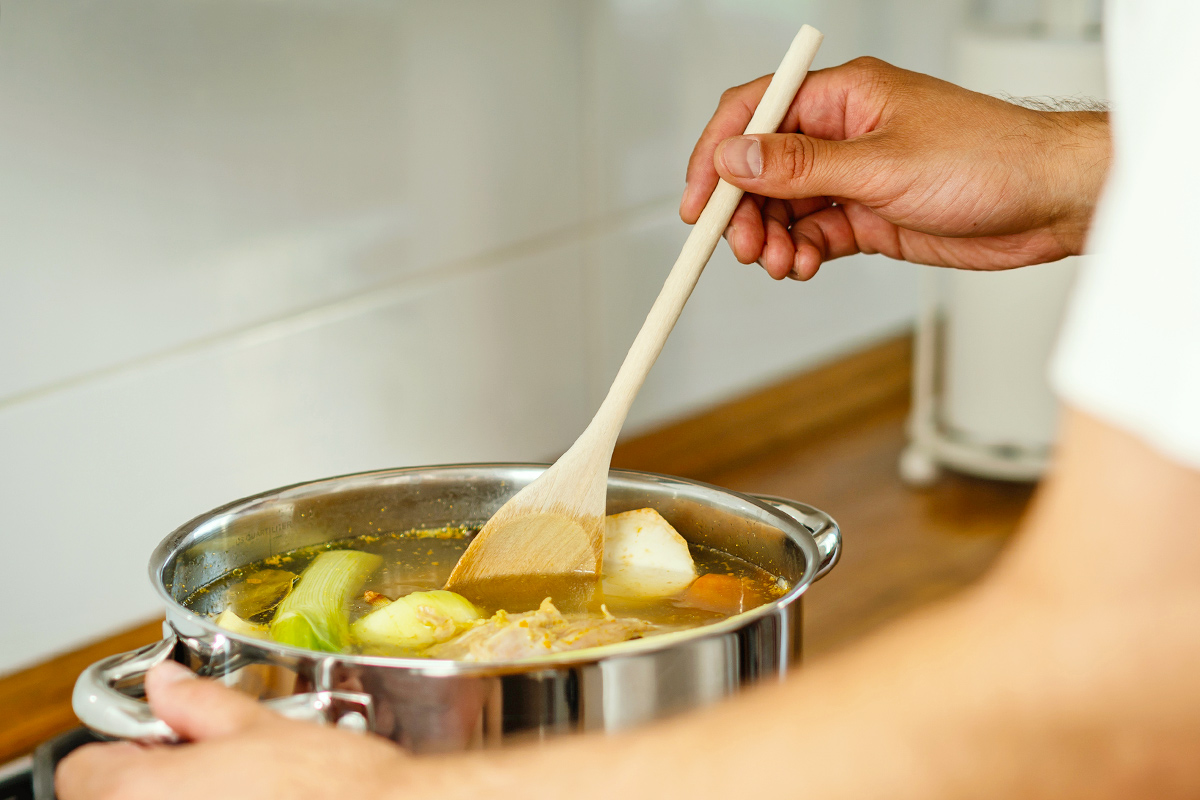With grocery prices on the rise, a lot of us are feeling the need to stretch our budget further. One simple solution is avoiding food waste wherever possible and finding ways to use scraps and leftovers that might otherwise be discarded. Making soup stock is one of the easiest (and tastiest) ways to do this,…
Turn Trimmings and Leftovers Into Soup Stock
Think of the things you usually discard when preparing vegetables: the peels of carrots and root vegetables, onion ends and skins, seedy cores of sweet peppers, herb stems, and celery leaves, just to name a few. All of those scraps are packed with flavor and nutrition, and they can go right into your soup pot. You’ll want to avoid anything in the brassica family (cabbage, broccoli, cauliflower), though, because they can make your stock bitter. And obviously, avoid moldy spots and wash off any actual dirt.
To turn your scraps into stock, put those unwanted leftover bits into a decent-sized pot. You can make an all-vegetable stock or add bones and leftover pieces of meat. Either way, aim for a ratio of about two parts water to one part other ingredients, measured by weight. While it’s easiest to measure the scraps with a kitchen scale, eyeballing the amounts works fine. You want the water to just barely cover the other ingredients.
More from our network
House Outlook is part of Inbox Studio, which publishes content that uplifts, informs, and inspires.
Cooking Your Homemade Stock
The next step is to bring your pot of ingredients to a gentle simmer, and settle in. Vegetable stock needs to simmer for only 30 to 40 minutes. For stock with meat and bones, plan on simmering for at least two to three hours (chicken or turkey bones), or up to six hours (big beef bones). Alternatively, use your Instant Pot (or another pressure cooker) for meaty stocks; the 25-minute “soup” setting will get the job done quickly and extract more flavor from the bones. Remember to use the natural pressure release for clear stock that’s easy to strain; the agitation caused by quick release will make the liquid cloudy. Cloudy stock is perfectly safe to eat, but many home cooks prefer the look and cleaner consistency of clear stock. Once the stock has finished simmering, strain out the solids and then refrigerate it.
Use your stock as a base for soups and sauces, or substitute it for water when you cook rice and other grains. It’ll even improve instant ramen.



















